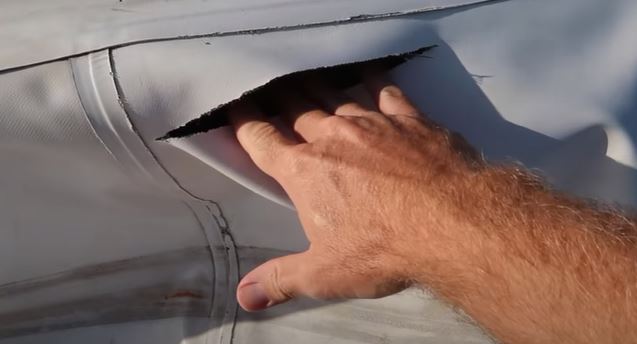Inflatable Kayaks have gotten a lot of attention over the last few years because they are a cheaper solution to having a kayak that is durable and easy to carry around. A lot of people are also choosing this type of product because it can be taken anywhere.
However, inflatable kayaks do have some disadvantages. They can be punctured and they can deflate. This can be a major inconvenience, especially if you are in the middle of nowhere. There are also some safety concerns with inflatable kayaks. If they deflate while you are in them, you could end up in the water without a paddle.
To avoid these issues, it is important to learn about the problem of inflatable kayaks and their solutions. In this article we are going to identify some of the most common problems with inflatable kayaks so that you become careful ahead facing those. By following some solutions, you can enjoy all the benefits of an inflatable kayak without any of the drawbacks.
Table of Contents
7 Common problems with Inflatable Kayaks
Inflatable kayaks are a great way to get out on the water and enjoy a day of paddling. But, there are some problems with them that you should know to get unlimited benefits of using an inflatable kayak. Here are 7 of the most common issues with inflatable kayaks:
1. Durability is lower
Inflatable kayaks are made of plastic or fabrics etc. Many cheap kayaks use low-grade plastics to manufacture their kayak which leads to producing low-quality inflatable kayaks.
Manufacturers are trying to win the battle of the market hence they are reducing their prices and giving less durable inflatable kayaks. Plastics or other polymers lose their life due to sun exposure and become vulnerable to less sharp edges.
2. Pressure Points
The tubes of your kayak can develop pressure points where the fabric is stretched tight over the frame. These pressure points can cause the fabric to wear through and start leaking.
To avoid this, make sure that you keep an eye on any areas of your kayak that seem to be under more stress and reinforcement those areas if necessary.
3. Unpredictable leaking
Leaking is a common inflatable kayak problem. You started kayaking with a very good pressurized kayak but in the middle of your journey, one of your tubes becomes deflated. What will you do then?
Everything inflatable can be leaked. Inflatable kayaks can be punctured by any type of sharp edges such as hooks, underwater sharp pieces of trees, Fins of fishes, sharp rocks, or during transporting them.
4. Low-quality fittings and accessories
Many cheap kayaks are manufactured by using low-quality fittings like valves, handles, seats, footrests, etc. A low-quality valve is not going to work. If you pump air into the tubes of your kayak, it will not be able to hold the air for a long time.
Another problem with inflatable kayaks is the inflatable seat. I don’t actually like inflatable seats because they do not provide back support properly. If you are not a serious kayaker it may not be a problem for you.
If someone planning to do regular kayaking for a long distance for them I recommend getting a better seat other than an inflatable one.
5. Poor performance
If you ask me to tell you another major problem with inflatable kayaks, I will say that poor performance will not give you the real pleasure of kayaking. They are very slow than a solid kayak.
Definitely, there are some good and bad between an inflatable kayak and a hard kayak but if you compare by the scale of performance, inflatable kayaks will be the looser. Stability is good but not in a windy area.
In a windy area, you will not be able to maintain your position or proceed forward as you expect. Tracking is not good due to their wide body.
It is really hard to kayak in a straight line avoiding zigzag motion. So, poor performance is one of the major problems with inflatable kayaks.
6. Weak seams
Many inflatable kayaks are found to be split seams after two to three trips which are not desirable at all. Sometimes the fabric can become ripped or torn. This can happen if the kayak is dragged over a rough surface.
If this happened, your money will squander away So, check every time before you launch your kayak.
If you found any symptoms of such fault, apply proper glue to that. Sometimes a newly delivered inflatable kayak is found to be split seam. Check them upon delivery by inflating the kayak.
7. Pumping difficulties
To launch your kayak you need to inflate the kayak every time. It may make you bother if you are a regular kayaker. A hand pump is the type of difficulty if you are a lazy person. Pushing the piston of your pump may not be pleasant for you every time.
Under inflation may make your kayak much slower than a normal-inflated kayak. Over inflation increases susceptibilities to different types of failure like- bursts, split seams, leaking, etc. so, learning about your inflatable kayak is very important to avoid these kinds of issues.
These are the most common problems with inflatable kayaks. Let’s learn how to avoid these problems and stay with inflatable kayaks.
How to avoid the problems with inflatable kayaks
Inflatable kayaks are a great option for those looking for a lightweight and easy-to-transport kayak. However, there are some potential issues that you should be aware of before using one as we discussed earlier.
The precautionary measure of leaking
One issue is that inflatable kayaks can puncture easily. This is usually caused by sharp objects on the river bed or rocks. It is important to be careful with your kayak before heading out and to avoid paddling over any sharp objects.
Learn properly how to maneuver a kayak and control them. Learn some basics of kayaking so that you may resist yourself not to fall into any hazard. Always keep a repair kit with you. If you do puncture your kayak, it is important to know how to patch it up quickly.
Must do a visual inspection every time you launch
It is important to inspect your inflatable kayak before each use. Make sure that the seams are intact. If you find any damage, do not use the kayak and contact the manufacturer for replacement parts or a new kayak if your deal covers it.
If your deal does not cover replacement try to fix it by yourself. You can learn how to patch your inflatable kayak online.
Try to go for a good quality kayak
Most of the cheap kayaks come up with a lot of problems as we described. It is natural that if you pay more you will get a better product. Why they are charging low or high? It is due to their quality.
Expensive kayaks normally charge for their good quality material, and well-design to gain good performance and aesthetic look.
If you are an occasional kayaker you can go for a mid-range kayak that could be 300 to 600 dollars for a good durable and good performing inflatable kayak. If you are a pro kayaker or want to kayak on regular basis, try to get a high-quality kayak ranging from 600 dollars to up.
What will you get from a quality kayak? Well, a good quality kayak will unlikely have problems like a split seam, puncture issues, and poor accessories. They are charging you higher due to the high-quality materials they use to manufacture their kayak.
Nowadays, many high-quality kayaks perform like hard shell kayaks and hence popularity is increasing day by day. Research on the best inflatable kayaks to meet up your requirements keeping these problems in mind.
Keep an instant repair kit
If you have any doubt about leaking and don’t want to take any risk, I will recommend you to keep an instant repair kit.
If your kayak punctures by any means, you will be able to solve the problem by utilizing that repair kit. You will be able to continue your trip for that day. After returning home you have to repair it permanently. Inflatable kayak repair is not that hard to learn.
Pumping tips
Proper pumping of an inflatable kayak makes it last longer and is comfortable to use. Many kayaks have a metering option on their body to measure proper pressure inside the tube.
You can use a manual or hand pump to give pressure inside your kayak. Try to follow the manufacturer’s recommendation about pressure.
If you don’t want to push a hand pump, you can use an electric pump. But be careful using an electric pump because it will continue to pump air into the kayak which leads to over inflation.
So, how to avoid over inflation?
First, know about your kayak’s optimum pressure rating. You will find it in the user manual or on the body of your kayak. Some of the kayaks mark it through painting lines and provide a scale to meet the length for optimum pressure.
To start the process you can use your electric pump for inflation. Turn off the electric pump at under inflation condition and then use your hand pump to give the final air in.
It may require a few strokes to get optimum inflation. If you want to use a hand pump only, then there is little chance to get over inflation.


